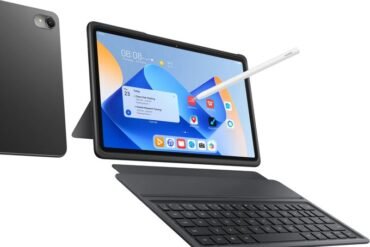Motherboard I/O Ports: USB, Audio, and Networking
Table of Contents
Introduction to Motherboard I/O Ports
A motherboard serves as the central nervous system of a computer, connecting all the various components and allowing them to communicate with each other. One crucial aspect of a motherboard is its I/O (Input/Output) ports, which provide connections for different devices and peripherals. In this article, we will explore three essential types of motherboard I/O ports: USB, audio, and networking.
USB Ports: USB (Universal Serial Bus) ports are perhaps the most common type of I/O ports found on motherboards. These ports allow users to connect a wide range of devices, such as keyboards, mice, printers, external hard drives, and smartphones. USB ports come in different versions, such as USB 2.0 and USB 3.0 (now USB 3.1 and USB 3.2), each offering varying data transfer speeds. USB ports are typically located on the back panel of a motherboard and are also available as internal headers for connecting front panel USB ports on a computer case.
Audio Ports: Audio ports on a motherboard enable the connection of various audio devices, including speakers, headphones, microphones, and sound systems. The most common audio port is the 3.5mm audio jack, which supports both analog audio output (e.g., speakers) and input (e.g., microphones). Some motherboards also feature additional audio ports, such as optical audio ports or dedicated headphone/microphone jacks. These ports are essential for creating an immersive audio experience while using a computer.
Networking Ports: Networking ports on a motherboard allow for connection to local area networks (LAN) or the internet. The most prevalent type of networking port is the Ethernet port (RJ-45), which enables a wired connection to a router or modem. This is crucial for high-speed internet access and online gaming. Additionally, some motherboards include built-in Wi-Fi modules, which provide wireless connectivity without the need for a separate Wi-Fi adapter. These networking ports are vital for accessing online resources and connecting with other devices on a network.
In conclusion, motherboard I/O ports play a crucial role in connecting various devices and peripherals to a computer. USB ports facilitate the connection of a wide range of devices, audio ports enable audio input and output, and networking ports provide access to local networks and the internet. Understanding these I/O ports is essential when building or upgrading a computer system, as they determine the compatibility and functionality of the connected devices.
USB Ports: Types and Functions
USB (Universal Serial Bus) ports are one of the most essential features found on modern motherboards. These ports allow for the connection of various peripheral devices, such as keyboards, mice, printers, external storage drives, and more. USB ports come in different types and have different functions, providing users with flexibility and convenience in their computing experience.
Here are the most common types of USB ports and their functions:
- USB 1.1/2.0: These are the earliest versions of USB ports and are typically found on older motherboards. USB 1.1 supports data transfer rates of up to 12 Mbps, while USB 2.0 offers faster speeds of up to 480 Mbps. These ports are suitable for connecting peripherals that don’t require high-speed data transfer, such as keyboards and mice.
- USB 3.0: Also known as USB 3.1 Gen 1, USB 3.0 ports provide significantly faster data transfer rates compared to previous versions. With a maximum speed of 5 Gbps, USB 3.0 is ideal for connecting external hard drives, flash drives, and other devices that require high-speed data transfer. These ports are usually distinguished by their blue color.
- USB 3.1: This version, also known as USB 3.1 Gen 2, offers even faster data transfer rates up to 10 Gbps. It is backward compatible with USB 3.0 and 2.0 devices. USB 3.1 ports are often identifiable by their red color or a “SS” (SuperSpeed) logo next to the port.
- USB Type-C: USB Type-C is a versatile and reversible connector that supports USB 3.1 Gen 2 speeds. It offers faster data transfer rates and can also deliver power to connected devices. USB Type-C ports are becoming increasingly common on modern motherboards, laptops, and smartphones, providing a convenient and standardized way to connect various peripherals.
In addition to their different types, USB ports also serve various functions:
- Data Transfer: USB ports allow for the transfer of data between the motherboard and connected devices. This enables the seamless exchange of files, media, and other information.
- Device Charging: Many USB ports, especially the newer versions, can also provide power to charge devices such as smartphones, tablets, and other gadgets. This eliminates the need for separate chargers and simplifies the charging process.
- Peripheral Connectivity: USB ports offer a convenient way to connect a wide range of peripheral devices to a computer, including keyboards, mice, printers, scanners, cameras, and audio devices. This allows users to expand their system’s capabilities and customize their setup to suit their needs.
In conclusion, USB ports play a crucial role in modern computing, providing versatile connectivity options and facilitating data transfer and device charging. Understanding the different types and functions of USB ports can help users make informed choices when selecting motherboards and peripheral devices for their systems.
Audio Ports: Connecting Sound Devices
When it comes to connecting sound devices to your computer, the audio ports on your motherboard play a crucial role. These ports allow you to connect speakers, headphones, microphones, and other audio peripherals to your computer for an immersive audio experience. Let’s take a closer look at the different audio ports commonly found on motherboards:
- Line Out: The Line Out port, also known as the audio output or speaker port, is used to connect external speakers or headphones. It provides analog audio signals for output, allowing you to enjoy high-quality sound from your computer.
- Line In: The Line In port, also known as the audio input or microphone port, is used to connect external audio sources such as microphones, musical instruments, or other audio devices. It allows you to record audio or use voice recognition software.
- Mic In: The Mic In port is specifically designed for connecting microphones. It provides a dedicated input for microphones, ensuring clear and crisp audio input for applications such as voice chatting, podcasting, or recording vocals.
- Digital Audio: Some motherboards come equipped with digital audio ports, such as S/PDIF (Sony/Philips Digital Interface) or optical audio ports. These ports allow you to connect to external audio devices that support digital audio, providing enhanced audio quality and compatibility.
It’s worth noting that motherboards can vary in terms of the number and types of audio ports they offer. Some may have additional audio ports such as surround sound outputs or dedicated headphone amplifiers. It’s important to check the specifications of your motherboard to ensure it meets your audio requirements.
To connect your sound devices, simply plug the corresponding audio cables into the appropriate ports on your motherboard. Most audio devices use standard 3.5mm audio jacks, so compatibility should not be an issue. However, if you have specialized audio equipment, you may need adapters or specific cables.
In summary, the audio ports on your motherboard provide the necessary connections for sound devices, allowing you to enjoy high-quality audio output and input. Understanding the different audio ports and their functions will help you make the most of your computer’s audio capabilities.
Networking Ports: Wired and Wireless Options
When it comes to networking, a motherboard’s I/O ports play a crucial role in connecting your computer to the internet and other devices. In this section, we will explore the wired and wireless networking options available through these ports.
1. Ethernet Port: The most common wired networking option found on motherboards is the Ethernet port. This port allows you to connect your computer to a local area network (LAN) using an Ethernet cable. It provides a stable and reliable connection, making it ideal for tasks that require high bandwidth, such as gaming or streaming.
2. Wi-Fi: Many modern motherboards come equipped with built-in Wi-Fi capabilities. These motherboards have a Wi-Fi antenna port that allows you to connect to wireless networks without the need for an additional Wi-Fi adapter. Wi-Fi provides the convenience of wireless connectivity, allowing you to connect to the internet and other devices without the hassle of cables.
3. Bluetooth: Some motherboards also feature built-in Bluetooth capabilities. Bluetooth allows you to connect your computer to other Bluetooth-enabled devices, such as wireless keyboards, mice, speakers, or headphones. It provides a convenient and wireless way to connect and interact with various peripherals.
4. Additional Networking Ports: In addition to Ethernet, Wi-Fi, and Bluetooth, some motherboards may offer additional networking options. These can include ports for fiber optic connections, Thunderbolt, or additional Ethernet ports for advanced networking setups.
Networking ports on a motherboard are essential for establishing connections with the outside world. Depending on your networking needs, you can choose a motherboard that provides the wired and wireless options that best suit your requirements. Whether you prefer the speed and reliability of a wired connection or the convenience of wireless connectivity, there are motherboard options available to cater to your networking preferences.
Conclusion: Importance of I/O Ports in Motherboards
In conclusion, the I/O ports on a motherboard play a critical role in connecting external devices, enabling communication, and enhancing the overall functionality of a computer system. These ports serve as gateways for data transfer, audio input/output, networking capabilities, and more.
Here are some key reasons why I/O ports are important:
- Connectivity: I/O ports provide the necessary connections to peripheral devices such as USB drives, keyboards, mice, printers, and external storage devices. Without these ports, it would be impossible to connect and utilize these devices effectively.
- Data Transfer: USB ports, in particular, are essential for high-speed data transfer between the computer and external devices. They allow for quick access to data, file sharing, and efficient backups, enhancing productivity and convenience.
- Audio Input/Output: Audio ports on motherboards enable the connection of speakers, headphones, microphones, and other audio devices. This allows users to enjoy high-quality sound output, engage in voice communication, or record audio, making it crucial for multimedia experiences and communication purposes.
- Networking Capabilities: Ethernet ports on motherboards provide a direct connection to the internet, allowing for fast and reliable networking. This is especially important for online gaming, video streaming, file sharing, and other internet-dependent activities.
- Expansion Options: Some I/O ports, such as PCIe slots, allow for further expansion of the system’s capabilities. These slots can be used to add dedicated graphics cards, sound cards, or networking cards, enhancing performance and customization.
In summary, the I/O ports found on motherboards are indispensable for modern computing. They enable connectivity, data transfer, audio functionality, networking capabilities, and expansion options. When choosing a motherboard, it is crucial to consider the number and type of I/O ports available to ensure compatibility with your desired devices and future requirements.



























